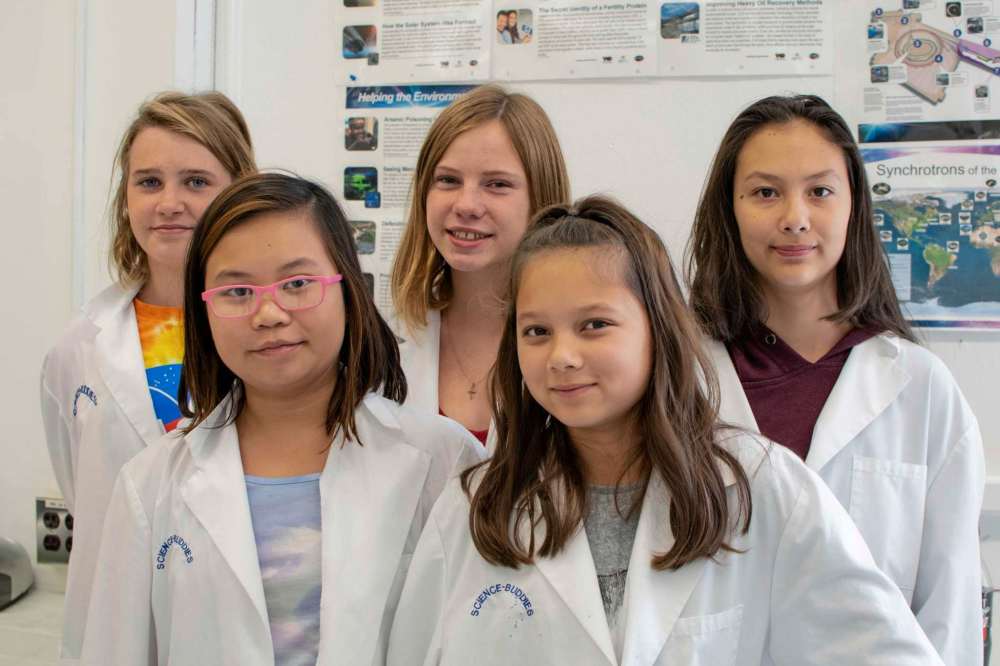Back to Earth — and school
Wolseley students analyze results after spacebound project returns home
Advertisement
Hey there, time traveller!
This article was published 31/08/2018 (2631 days ago), so information in it may no longer be current.
Five Wolseley School students are heading back to class with an out-of-this-world summer vacation story.
In June, Kiara Dayson, Betty Ngo, Emelia Stephenson, Madeline Stewart and Sariah Dayson travelled to Cape Canaveral, Fla., to watch their science experiment get launched into space and last week they got to analyze the results.

Seeing the rocket carrying their yarrow seed experiment push off into orbit was a “once in a lifetime experience” for Emelia, who had never been on a plane or travelled outside of Manitoba before.
“At the beginning it was like a big light going up and then it turned into a big cloud,” she said, adding that they could feel the vibration of the rocket kilometres away from the launch site.
During the three-day trip the students visited NASA’s Kennedy Space Centre got to have lunch with American astronaut Sam Durrance.
The students’ experiment into the effects of microgravity on yarrow germination was one of two Winnipeg School Division projects selected for the Student Spaceflight Experiments Program.
“It was pretty exciting,” Madeline said. “Something that we touched was on the International Space Station.”
The Grade 6 and 7 all-girls STEM (science, technology, engineering, math) team, led by Wolseley School principal Suzanne Mole, wanted to know if yarrow would grow in space without soil.
“Yarrow is a plant that grows naturally in Manitoba and First Nations use it and it has a lot of medical benefits. You can make tea out of it, you can make a tincture and it can heal deep wounds,” Emelia said. “If it could grow in space, astronauts could use it on their trip to Mars for medicine.”
The students harvested the yarrow seeds from their school garden and packed them into test tubes filled with rock wool — one set of seeds was sent to space for three weeks and the other remained on Earth. On Aug. 28, the girls looked at the tiny seeds through a microscope and marked down what they saw.

“The microgravity definitely had an effect on the seeds,” Emelia said.
“There was germination in the microgravity one, but there was a bigger germination in the controlled experiment that was here on Earth,” Madeline said, adding that eight out of the 10 seeds from space had roots coming out of them.
“The ones that stayed here on Earth looked bigger and were darker in colour because they seemed to absorb more water,” Sariah added.
The students are looking forward to sharing the results of their year-long experiment with their classmates when they return to school.




